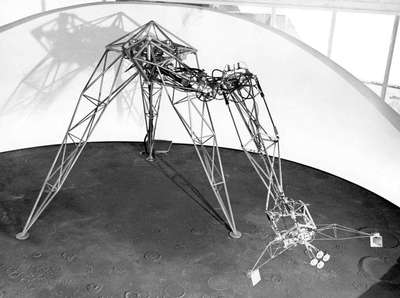The Senster (probably the first exhibited robotic sculpture controlled by a computer) was commissioned by Philips, the consumer electronics firm for it’s permanent showplace, the Evoluon, in Eindhoven. Apart from responding to people’s sounds, it was designed to respond to their movements as well, through the means of radar. It was unveiled in 1970 and remained on permanent show until 1974 when it was dismantled.
»Senster«
by Edward Ihnatowicz
| i |





| creators: | Edward Ihnatowicz |
| title: | Senster |
| year: | 1970 |
| material: |
robot, kinetic The Senster was over 4 metre long and was welded out of steel tubing, with the castings employed only in the more intricate microphone positioning mechanism. It’s behaviour was controlled by a computer. The microphones would locate the direction of any predominant sound and move the framework towards the source if the sound was prolonged. Short lasting sound would cause the framework to regress. Further technical details about it’s mechanism can be found here >> . |
| artwork type: | installation, robotic |
Description
Artists
Illustrations
Comments
enter new comment

